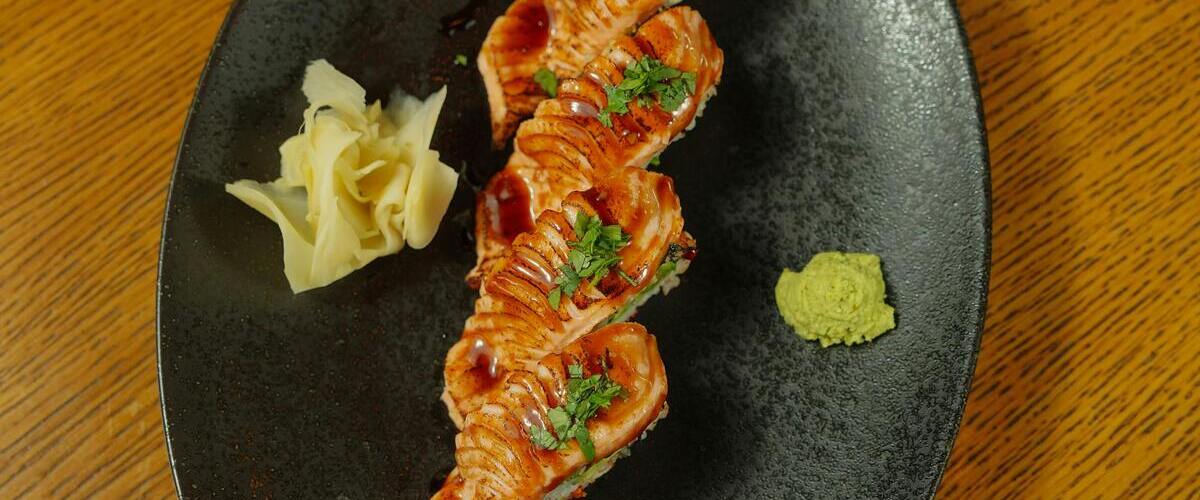The Benefits of Fermented Soy Products: Miso, Tempeh, and Natto
Do you love experimenting with bold flavors in the kitchen? Are you eager to explore new ingredients that pack a nutritious punch? If so, then fermented soy products are the perfect addition to your culinary repertoire. From miso and tempeh to natto, these fermented ingredients offer a range of unique tastes and consistencies that are sure to please even the most discerning gourmets. Not only do they provide powerful flavor profiles but they also bring numerous health benefits along with them! In this blog post we'll explore all there is to know about these phenomenal foods, from their delectable properties down to their impressive nutritional content; by the end of it you'll be reaching for one - or more - of these delicacies on your next shopping trip!
What is fermentation and how it affects food

Fermentation is a remarkable process that has completely transformed the way we consume and enjoy food. It's a slow and steady transformation of sugars in food, typically aided by bacteria or yeast, that has been used for centuries to make delicious and healthy food. And it's not just about creating a unique flavor profile, but also about unlocking the nutrients that make food easier to digest and absorb. Through fermentation, we can turn raw cabbage into tangy and probiotic-rich sauerkraut, milk into creamy and tangy yogurt, and even grains and legumes into refreshing drinks like kefir. Fermentation is a science that is both fascinating and inspiring, and it's a true testament to the ingenuity of humans when it comes to improving and enhancing our food.
Miso - benefits, types, and how to use it
Miso is a traditional Japanese condiment made from fermented soybeans that has become increasingly popular in the Western world over the past few decades. It's usually sold in paste form and comes in a variety of flavors ranging from mild and sweet to salty and savory.
Miso is a versatile and nutrient-rich ingredient that can take your cooking to the next level. Not only does it add a savory umami flavor to dishes, but it also boasts a variety of health benefits. From aiding digestion to lowering cholesterol, miso has been used in traditional Japanese medicine for centuries. There are several types of miso, ranging in color from white to dark brown, and each has its own unique taste and texture. White miso is mild and sweet, while red miso is bolder and more intense. To use miso in your cooking, try adding it to dressings, marinades, soups, or even desserts for an unexpected twist of flavor. Get creative with your miso usage and reap all the benefits it has to offer!
Tempeh – benefits, types, and how to use it
Tempeh is a traditional Indonesian fermented food made from cooked and slightly cultured soybeans. It has a firm texture and nutty flavor that is perfect for adding complexity to your favorite dishes. Not only is tempeh incredibly flavorful, but it also offers many health benefits as well. Tempeh contains probiotics.
As a passionate advocate of healthy eating, I am thrilled to share with you the many incredible benefits of tempeh. Not only is this plant-based protein packed with essential amino acids, but it also offers an abundance of fiber, vitamins, and minerals to support a thriving body and mind. From classic soybean tempeh to unique varieties made from lentils, chickpeas, or even black beans, there is a type of tempeh to suit every taste and culinary preference. Whether you sauté it, grill it, bake it, or blend it into a smoothie, the possibilities are endless when it comes to incorporating this nutritious ingredient into your meals. So why not give tempeh a try and reap all the amazing health benefits it has to offer?
Natto – benefits, types, and how to use it
Natto is a traditional Japanese food made from fermented soybeans. It has an interesting flavor profile and unique texture that makes it an ideal ingredient for dishes like sushi or ramen. But its distinct taste isn’t the only thing that sets natto apart – it also offers a range of impressive health benefits. These benefits include its high amount of protein, fiber, and probiotics that promote a healthy gut microbiome. Natto is typically made from fermented soybeans and has a distinct taste and texture that can take some getting used to. However, there are also different types of natto, such as those made from other legumes like chickpeas or black beans. To incorporate natto into your meals, you can try adding it to rice bowls, salads, or even as a topping for sushi rolls. Once you discover the benefits and different methods of consumption, you too may become a fan of this unique and nutritious food.
The nutritional value of these three foods
When it comes to maintaining a healthy and balanced diet, understanding the nutritional value of the foods we eat is crucial. And there are few things more important than the three foods we're focusing on today. From the high-protein goodness of quinoa to the antioxidant-rich properties of blueberries to the leafy green powerhouse that is spinach, these three foods are a nutritional trifecta. Incorporating them into your diet can benefit your overall health in countless ways, from boosting your immune system to improving digestion. And with so many delicious recipes to choose from, it's never been easier to make them a staple in your weekly meal planning.
How to incorporate fermented soy products into your diet
Fermented soy products have been consumed for centuries and for good reason. Not only are they incredibly nutritious, but they also offer a host of health benefits. That being said, it can be a bit overwhelming to incorporate these unique flavors and textures into your daily diet. From miso and tempeh to natto and soy sauce, there are plenty of tasty options to choose from. One of the simplest ways to start is by adding a dollop of miso paste to soup or stews for a boost of umami flavor. Tempeh can be used as a meat substitute in stir-fries and salads, while natto can be enjoyed with a bowl of rice and vegetables. You can also experiment with making your own fermented soy products at home, like soy yogurt or kefir. With a little experimentation, adding fermented soy to your diet can be both delicious and rewarding.
Miso Recipe: Miso-Marinated Grilled Salmon
Ingredients:
- 4 salmon fillets
- 1/3 cup white miso paste
- 2 tablespoons mirin (rice wine)
- 2 tablespoons sake
- 2 teaspoons sugar
Instructions:
- In a medium bowl, mix together the miso, mirin, sake, and sugar until combined.
- Place salmon fillets in a shallow dish and pour the miso mixture over them. Cover and refrigerate for at least 30 minutes or overnight.
- Preheat an outdoor grill or indoor grill pan to medium-high heat and lightly oil the grates with cooking spray.
- Remove the salmon fillets from the miso marinade and discard the remaining marinade. Grill the salmon for 3-5 minutes per side, or until cooked through.
- Serve with steamed vegetables and a side of rice. Enjoy!
Tempeh Recipe: Tempeh Tacos With Avocado Salsa
Ingredients:
- 8 ounces tempeh, diced into small cubes
- 1 tablespoon olive oil
- 2 cloves garlic, minced
- 1 teaspoon chili powder
- ½ teaspoon ground cumin
For the avocado salsa:
- 2 avocados, peeled and diced
- ¼ cup chopped fresh cilantro leaves
- 2 tablespoons fresh lime juice
- 1 teaspoon olive oil
- Salt and pepper, to taste
For the tacos:
- 6-8 small tortillas of your choice (corn or flour)
Instructions:
- Heat the olive oil in a large skillet over medium heat. Add the diced tempeh cubes and cook for 5 minutes until lightly browned.
- Add the garlic, chili powder, and cumin to the pan and stir to coat the tempeh. Cook for another 3-4 minutes until fragrant.
- Meanwhile, make your avocado salsa by combining all the ingredients in a bowl and stirring until combined. Set aside while you assemble the tacos.
- Heat the tortillas in a separate skillet over medium heat for 1-2 minutes per side until lightly browned and warmed through.
- To assemble, place some of the tempeh onto each tortilla and top with the avocado salsa, extra cilantro leaves, diced tomatoes or other desired toppings. Serve immediately and enjoy!
Natto Recipe: Natto Fried Rice
Ingredients:
- 2 cups cooked rice
- 4 tablespoons natto paste
- 2 tablespoons soy sauce
- 1 teaspoon sesame oil
- ½ onion, diced
- 2 cloves garlic, minced
- ¼ cup frozen peas and carrots mix
Instructions:
- Heat a large skillet over medium-high heat and add the sesame oil.
- Add the onion and garlic and sauté for 2 minutes until fragrant.
- Add the peas and carrots mix to the pan and cook for an additional 3 minutes until vegetables are tender.
- Reduce heat to medium-low, add the cooked rice to the pan, and stir to combine with vegetables.
- Make a well in the center of the pan and add natto paste, followed by soy sauce, stirring everything together until combined. Cook for an additional 5 minutes or until heated through.
- Serve immediately topped with extra natto paste (optional) and enjoy!
In conclusion, fermented soy foods are multi-dimensional in their offering of health benefits, variety, and taste. For those looking to incorporate a more plant-based and sustainable diet into their daily nutrition plan, or for those who just want to enjoy the flavor of these incredible traditional foods, fermented soy products can have a major impact on the way we eat and how our bodies respond. Through fermentation processes that naturally enrich protein content and add beneficial bacterial elements that aid digestion and gut health, submerged with antioxidants and vitamins from the base ingredient – Soybeans – there’s an undeniable value in exploring its three marvel forms: Miso, Tempeh, and Nattō. With properly utilized knowledge of their uses in recipes, precise measuring of portions consumed daily throughout meals or snacks – along with its renowned comforting qualities - fermented soy foods may very well be your newest diet staple for a healthier tomorrow.






